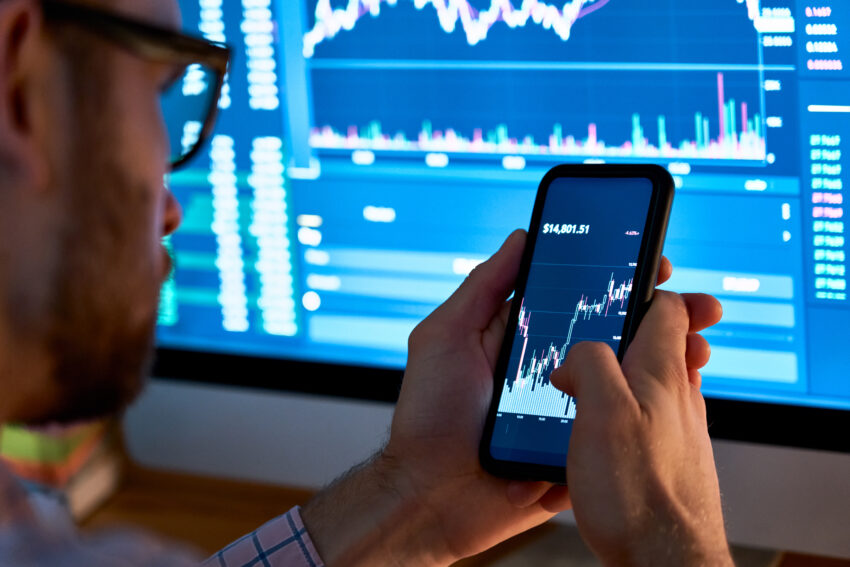Silver price charts are a window into market sentiment and industrial demand. The XAG/USD pair, tracking silver against the US dollar, provides clues about the economic cycle and investor behavior. By studying these charts, traders can spot trends, time entries and manage risks in a volatile market.
As of October 14, 2025, XAG/USD trades at $50.55 per troy ounce, down 3.56% daily but up 60.67% year-to-date. This follows a nine-week rally, with a high near $53.77. The silver price chart reflects both safe-haven buying and industrial strength, making it a dual-purpose tool.
Start with the basics: Candlestick charts clearly show price action, with each candle capturing the open, close, high and low prices. Daily or weekly frames reduce noise while revealing broader trends.
Major Technical Tools for Trend Analysis
The moving average is your first stop. The 50-day SMA at $47 and the 200-day SMA at $42 confirm silver's bullish trend as XAG/USD trades above both. Price above the 50-day indicates continuation of the uptrend; Below are the reversal signals.
RSI measures momentum. At 76, Silver is overbought, indicating potential downside after hitting 80 last week. A reading below 30 flags oversold buying. Stick with MACD for confirmation—its bullish crossover above zero is aligned with the recent break of $50.
Volume is important. Increasing volume on days like the 15% surge during the September rally reflects strong buyer confidence. Low volume on the downside indicates weak selling pressure, which supports trend strength.
Spotting Patterns and Key Levels
Chart patterns guide predictions. If support at $48.70 holds, a recent bullish flag for silver could be seen after breaking the $50 mark and reaching a target of $55. Watch for reversals like the double top near $53.77 that capped previous rallies.
Support and resistance are the basis. Key supports sit at $50 (psychological) and $48.70; Resistance is hovering at $53.77 and $55. Trendlines connecting the higher lows confirm the slope of the uptrend since July's $29.29 base.
Fibonacci retracement accelerates entries. From the move from $29 to $53, the 61.8% level at $40 provides a dip-buy zone. Couple this with volume spikes to validate the setup.
Silver's relationship to broader markets
Silver’s dual role – safe-haven and industrial metal – connects it to macro trends. Silver's price chart often moves in line with gold, but its 50% industrial use (solar, EVs) adds unique drivers. Gold's
Crypto markets also sync. Bitcoin's $110,000 level, 12% below peak, reflects haven shift mirroring silver's rally. Their correlation reached 0.45 in the stress period of 2025. A breakout of silver above $53 could signal crypto stabilization.
Industrial signals matter. Aluminum's 6% YTD gain is tied to EV demand, which has driven silver's shortfall by 182 million ounces. Cross-asset analysis adds confidence to silver trends.
practical trading strategies
Apply the chart systematically. Use weekly frames for trend direction, daily frames for entries. Buy a pullback to the 50-day SMA with a stop-loss less than 5%, such as $48 for current levels.
Backtest setup-Silver's 2025 flag pattern led to 10% gains on breakout. Risk 1% per trade, using ATR-based stops for volatility.
Track the Fundamentals: China's solar demand and Fed rate cut boost silver rally. Pair with ETFs or futures for exposure; Avoid excessive leverage.
Monitor silver price charts daily on platforms like TradingView. Combine TA with news for context – tariffs or deficits could fuel moves.
Future outlook and opportunities
Silver's movement looks strong. There is a forecast of $55 by the end of the year due to deficit and green technology. The overbought RSI suggests a 5-7% decline, which is ideal for entries near $48.
In the long term, if industrial demand grows 4% annually, silver could reach $60 by 2026. Allocate 5-10% to silver assets, hedging with gold or stablecoins.
The silver price chart is your roadmap – use it to navigate trends, not chase spikes. Patience and discipline turn signals into profits.









